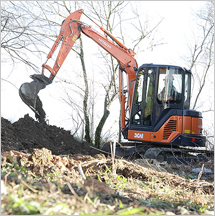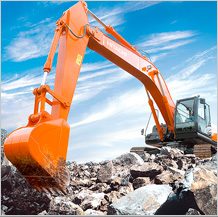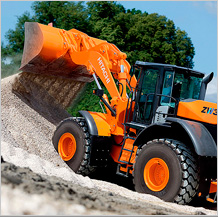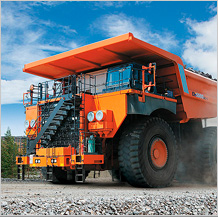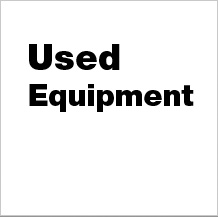
The Pramula Foundation was established based on a foundation establishment meeting on January 2, 1981 with the following decisions:
Foundation called Pramula Foundation, Founded on Tuesday 27 January 1981, Establishment Place in Palembang, Principles and Foundations of Pancasila and Constitution 45
Aim
Also successful in national development. especially in the field of National Education by helping to implement educational programs that are the line of government policy.
Helping the Government and the State in the context of educating the life of the Nation and helping the community who want to include school-age children in the framework of equitable education
Develop education in the Pramula Foundation environment internally and externally in the broadest sense of the word.
Founding father
F. Djon, BA
H. Eddy Salam, S.H., M.M.
Rozi, MB
Husein Azhari
In 1981 the Pramula Foundation established a Junior High School with a license from the Regional Office of the Ministry of Education and Culture, South Sumatra Province Number 291/1981 on January 16, 1981. In 1986 the Pramula Foundation Established a High School with a Decree of the Minister of Education and Culture of the Republic of Indonesia Number: 30/1/11/28 / F.40 / 1986 dated May 30, 1986.
History of the Ministry of Education and Culture
Early Independence (1945-1950)
In pre-independence education was not to educate the natives, but rather the colonial interests of the colonizers. In this section, the spirit of fostering Indonesia is so thick as part of building one's identity as an independent nation. Because it is not excessive if the minister's instructions at that time also related to efforts to pump up the spirit of struggle by requiring schools to fly the red and white every day in the school yard, singing the Indonesia Raya song, to abolish the Japanese song Kimigayo.
The ministry's organization which at that time was still called the Ministry of Teaching was still very simple. But awareness to prepare the curriculum has been done. The first teaching minister in the history of the Republic of Indonesia is Ki Hadjar Dewantara. In the Syahrir I Cabinet, the Minister of Teaching was entrusted to Mr. Noble. Mr. Mulia took various steps, such as continuing the previous ministerial policy in the field of nationalism-oriented curriculum, improving educational facilities and infrastructure, and increasing the number of teachers.
In the Syahrir II Cabinet, the Minister of Teaching was held by Muhammad Sjafei until October 2, 1946. Furthermore, the Minister of Teaching was entrusted to Mr. Soewandi until June 27, 1947. In the era of leadership Mr. Soewandi was formed by the Teaching Investigation Committee of the Republic of Indonesia, chaired by Ki Hadjar Dewantara. This committee aims to lay the foundations and structure of new teaching.
Era of Liberal Democracy (1951-1959)
It can be said that at this time political stability became something rare, as well as programs that could be used as milestones, could not be described properly. During the period of liberal democracy, around nine years, there have been seven cabinet changes. The Natsir Cabinet, formed on 6 September 1950, appointed Dr. Bahder Johan as Minister of Education and Culture Teaching (PP and K). Starting in April 1951 the Natsir Cabinet was replaced by the Sukiman Cabinet which appointed Mr. Wongsonegoro as Minister of PP and K. Furthermore Dr. Bahder Johan served as Minister of PP and K once again, then was replaced by Mr. Mohammad Yamin, RM. Soewandi, Ki Sarino Mangunpranoto, and Prof. Dr. Prijono
In this period, the education policy was a continuation of the ministerial policy of the previous period. What stands out in this era is the birth of an umbrella of formal legal law in the field of education, namely the Basic Education Law No. 4 of 1950.
Era of Guided Democracy (1959-1966)
Presidential Decree July 5, 1959 ended the era of parliamentary democracy, replaced by the era of guided democracy. In the era of guided democracy, many tests have befallen the nation of Indonesia. Confrontation with the Netherlands in the West Irian problem, until the events of the G30S / PKI became a severe test for the Indonesian people.
In Working Cabinet I, 10 July 1959 - 18 February 1960, the status of the ministry was changed to become a junior minister. The ministry in charge of education is divided into three young ministers. The Deputy Minister of Social and Cultural Affairs was held by Dr. Prijono, the Vice Minister of PP and K were held by Sudibjo, and the Deputy Minister of Youth Mobilization was held by Sujono.
The New Order Era (1966-1998)
After the G30S / PKI Rebellion was quelled, there was a transition from guided democracy to Pancasila democracy. The era was known as the New Order led by President Soeharto. The policies in the field of education in the New Order era were quite numerous and varied bearing in mind that this order held power for 32 years. The policies include P4 upgrading obligations for students, normalization of campus life, student development through OSIS, improved Indonesian spelling or EYD, real work lectures (KKN) for students, starting school development, and others. In this era precisely in 1978 the new school year was shifted to June. The development of educational infrastructure also developed rapidly during the New Order era.
The Minister of Education and Culture in the New Order era included Dr. Daud Joesoef, Prof. Dr. Nugroho Notosusanto, Prof. Dr. Faud Hassan, Prof. Dr. Ing. Wardiman Djojonegoro, and Prof. Dr. Wiranto Aris Munandar
Reformation Era (1998-2011)
After successfully winning six elections, the New Order finally arrived at the end of its journey. In 1998 Indonesia was hit by a political and economic crisis. Large-scale demonstrations that year succeeded in forcing President Soeharto to resign. The first cabinet in the reform era was the cabinet that resulted from the 1999 General Elections led by President Abdurrahman Wahid. During this time the Ministry of Education and Culture was changed to the Ministry of National Education by appointing Dr. Yahya Muhaimin as Minister of National Education.
In 2001 the MPR deposed President Abdurrahman Wahid in a special session of the MPR and appointed Megawati Soekarnoputri as president. In the era of President Megawati's administration, the Minister of National Education was Prof. Ministry of Education and Culturre Kemendikbud
Vision
- Realizing Strong Educational and Cultural Performers
- Realizing Wider, Even and Equitable Access
- Realizing Quality Learning
- Realizing the Preservation and Promotion of Culture, and Language Development
- Realizing Strengthening Governance and Increasing the Effectiveness of Bureaucracy and Public Engagement
- Strengthening the Role of Students, Teachers, Educational Personnel, Parents and Educational Institution Apparatuses in the Educational Ecosystem.
- Empowering Cultural Performers in Preserving and Promoting Culture.
- Improving Access to Early Childhood Education, Basic Education, Secondary Education, Community Education, and Education of Children with Special Needs.
- Quality Improvement and Relevance of Learning Oriented on Character Building.
- Improvement of National Identity through Language Preservation as an Introduction to Education.
- Enhancing Transparent and Accountable Governance Systems by Involving the Public Ministry of Education and Culture Kemendikbud
Work Culture Values of the Ministry of Education and Culture
harmony between thoughts, words and deeds
Creative and Innovative
Having creativity, having the ability to create new things that are different from those that already exist or that are already known (ideas, methods or tools)
Initiative
A person's ability to act beyond what is needed or demanded from work
The learner
Always trying to develop competence and professionalism
Uphold the Bureau of Cooperation
Uphold fairness in giving awards to competent employees
Actively involved
Always participate in activities
Without ulterior motives
Working sincerely and sincerely without strings attached Ministry of Education and Culture Kemendikbud
💁 STANDARDS OF BASIC AND
MEDIUM EDUCATION
CONTENTS
competencies and the process of gaining these competencies. These three competencies have different acquisition processes. Attitudes are formed through activit : accept, run, appreciate, appreciate, and practice. Knowledge is possessed through activities: knowing, understanding, applying, analyzing, evaluating, and creating. Skills are obtained through activities: observing, asking, trying, reasoning, presenting, and creating. Characteristics of competencies and their different acquisition processes affect the Content Standards
💁 LEVEL COMPETENCE
💁 CORE COMPETENCY OF
MIDDLE SCHOOL
Spritual attitude
- Honest
- Disciplined
- Polite
- Confident
- Caring and
- Responsible
Understanding and applying factual, conceptual, procedural, and metacognitive knowledge at a simple technical and specific level based on his curiosity about:
- Science
- Technology
- Art
- Culture
- Productive
- Creative
- Critical
- Independent
- Collaborative and
- Communicative
.
💁 CORE COMPETENCY
OF HIGH SCHOOL
- Appreciate and practice behavior
- Honest
- Discipline,
- Polite
- Care (mutual cooperation, cooperation, tolerance, peace)
- To be responsible
- Responsive, and
- Proactive
- Science
- Technology
- Art
- Culture
- Humanities
- Effective
- Creative
- Productive
- Critical
- Independent
- Collaborative
- Communicative and
- Solutive
💁 EDUCATOR AND EDUCATION
STAFF STANDARDS
Academic qualifications referred to above are the minimum level of education that must be fulfilled by an educator as evidenced by a relevant diploma and / or certificate of expertise in accordance with applicable laws and regulations.
Competencies as learning agents at primary and secondary education levels and early childhood education include:
* Pedagogical competence
* Personality competence
* Professional competence and
* Social competence. Ministry of Education and Culture Kemendikbud
💁 FACILITIES AND
INFRASTRUCTURE
STANDARDS
Each education unit must have facilities which include furniture, educational equipment, educational media, books and other learning resources, consumables, and other equipment needed to support an orderly and continuous learning process.
Each education unit must have infrastructure that includes land, classrooms, leadership rooms for education units, teaching rooms, administrative rooms, library rooms, laboratory rooms, workshop rooms, production unit rooms, canteen rooms, power installations and services, places to exercise, places of worship, places to play, places to be creative, and other spaces / places needed to support an organized and continuous learning process. Ministry of Education and Culture
💁 MANAGEMENT STANDARDS
Management Standards consist of 3 (three) parts, namely management standards by the education unit, management standards by the Regional Government and management standards by the Government. Ministry of Education and Culture Kemendikbud
💁 EDUCATION FUNDING
STANDARDS
Education funding consists of investment costs, operating costs, and personal costs.
The investment costs of the education unit as referred to above cover the costs of providing facilities and infrastructure, human resource development, and permanent working capital.
Personal costs referred to above include education costs that must be incurred by students to be able to follow the learning process regularly and continuously.
The operational costs of the education unit as referred to above include :
- The salary of educators and education personnel and all benefits attached to salaries
- Consumable educational materials or equipment and
- Indirect education operating costs in the form of power, water, telecommunications services, maintenance of facilities and infrastructure, overtime pay, transportation, consumption, taxes, insurance, etc. Ministry of Education and Culture Kemendikbud
The Flagship Scholarship Program provided by the Ministry of Education and Culture is intended to support efforts to improve the quality of Indonesian human resources through the provision of educational and training assistance through both degree and non-degree channels. In accordance with the duties and functions of the Ministry of Education and Culture, this program is prioritized to support efforts to improve the quality of education and culture so that those financed are prioritized for fields relevant to the development of education and culture. The Flagship Scholarship Program also supports the Government's efforts to reduce disparities in educational performance between community groups, so that the program also provides greater opportunities for the poor and / or those living in disadvantaged areas.Through this website we hope that the public can find out the correct and up-to-date information about the Scholarship Program SUPERIOR SCHOLARSHIP

Activities
💁 INDONESIAN DICTIONARY
This Indonesian Big Dictionary Application (KBBI) is an online KBBI (in an unofficial / online network) created to facilitate the search, use and reading of the meaning of words (entries / sub entries). Unlike some similar websites, we try to provide a variety of more features, such as speed of access, display with different colors for word types, the right display for all web browsers both desktop computers, laptops and smartphones and so on. The full features can be read in the Fitur KBBI Daring.
This KBBI Online Main Database still refers to KBBI Online Edition III, so that the contents (words and meanings) are Copyright of the Language Development and Coaching Agency, Ministry of Education and Culture (formerly the Language Center). Beyond the main data, we try to add new words that will be given additional information at the end of the meaning or definition with "External Definitions". Hopefully more and more treasures of educational references in Indonesia and can provide broad benefits. This application is more like an archive only, so that links / links (links) that point to this site are still available. To find words from the latest (fifth) edition of KBBI, please refer to the official website at kbbi.kemdikbud.go.id
Indonesian dictionary KBBI
AND CULTURE LIBRARY
PROFILE
Management of the Ministry of Education and Culture is carried out in accordance with the National Library Standards (SNP), which in 2017 the Ministry of Education and Culture has received an A accreditation by the National Library of Indonesia. The Ministry of Education and Culture Library is professionally managed by utilizing information and communication technology in supporting services to users. The library seeks to improve the quality of service by always updating collections and services according to the needs of users and the direction of the Ministry of Education and Culture. With the advantage of a strategic and convenient location, the Ministry of Education and Culture is also a place for educational and cultural community activities to hold various events and activities on a regular basis. Library of the Ministry of Education and Culture Kemendikbud
Library of the Ministry of Education and Culture Kemendikbud
Ministry of Education and Culture Kemendikbuds







